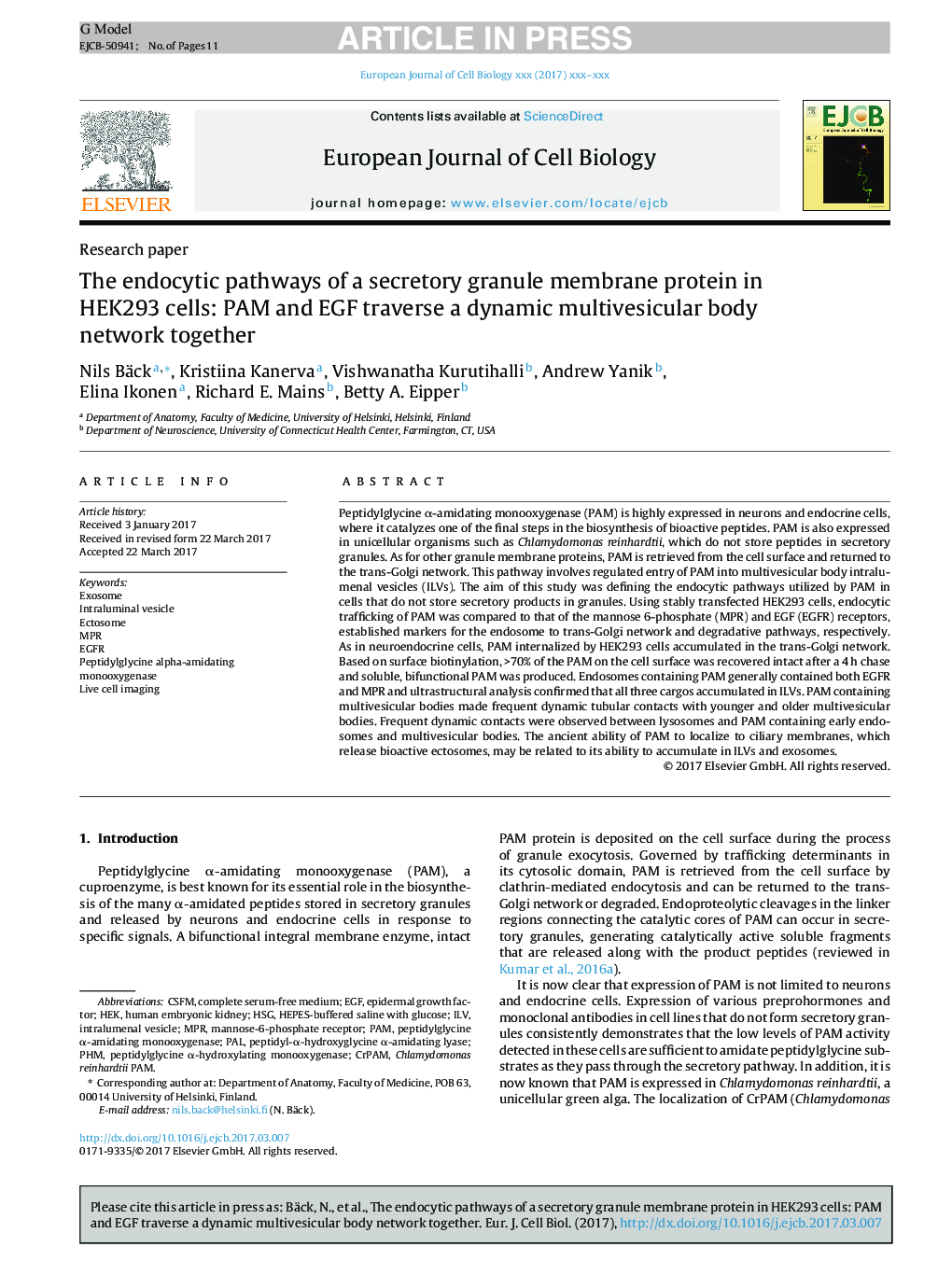| Article ID | Journal | Published Year | Pages | File Type |
|---|---|---|---|---|
| 5532220 | European Journal of Cell Biology | 2017 | 11 Pages |
Abstract
Peptidylglycine α-amidating monooxygenase (PAM) is highly expressed in neurons and endocrine cells, where it catalyzes one of the final steps in the biosynthesis of bioactive peptides. PAM is also expressed in unicellular organisms such as Chlamydomonas reinhardtii, which do not store peptides in secretory granules. As for other granule membrane proteins, PAM is retrieved from the cell surface and returned to the trans-Golgi network. This pathway involves regulated entry of PAM into multivesicular body intralumenal vesicles (ILVs). The aim of this study was defining the endocytic pathways utilized by PAM in cells that do not store secretory products in granules. Using stably transfected HEK293 cells, endocytic trafficking of PAM was compared to that of the mannose 6-phosphate (MPR) and EGF (EGFR) receptors, established markers for the endosome to trans-Golgi network and degradative pathways, respectively. As in neuroendocrine cells, PAM internalized by HEK293 cells accumulated in the trans-Golgi network. Based on surface biotinylation, >70% of the PAM on the cell surface was recovered intact after a 4 h chase and soluble, bifunctional PAM was produced. Endosomes containing PAM generally contained both EGFR and MPR and ultrastructural analysis confirmed that all three cargos accumulated in ILVs. PAM containing multivesicular bodies made frequent dynamic tubular contacts with younger and older multivesicular bodies. Frequent dynamic contacts were observed between lysosomes and PAM containing early endosomes and multivesicular bodies. The ancient ability of PAM to localize to ciliary membranes, which release bioactive ectosomes, may be related to its ability to accumulate in ILVs and exosomes.
Keywords
Related Topics
Life Sciences
Agricultural and Biological Sciences
Plant Science
Authors
Nils Bäck, Kristiina Kanerva, Vishwanatha Kurutihalli, Andrew Yanik, Elina Ikonen, Richard E. Mains, Betty A. Eipper,
